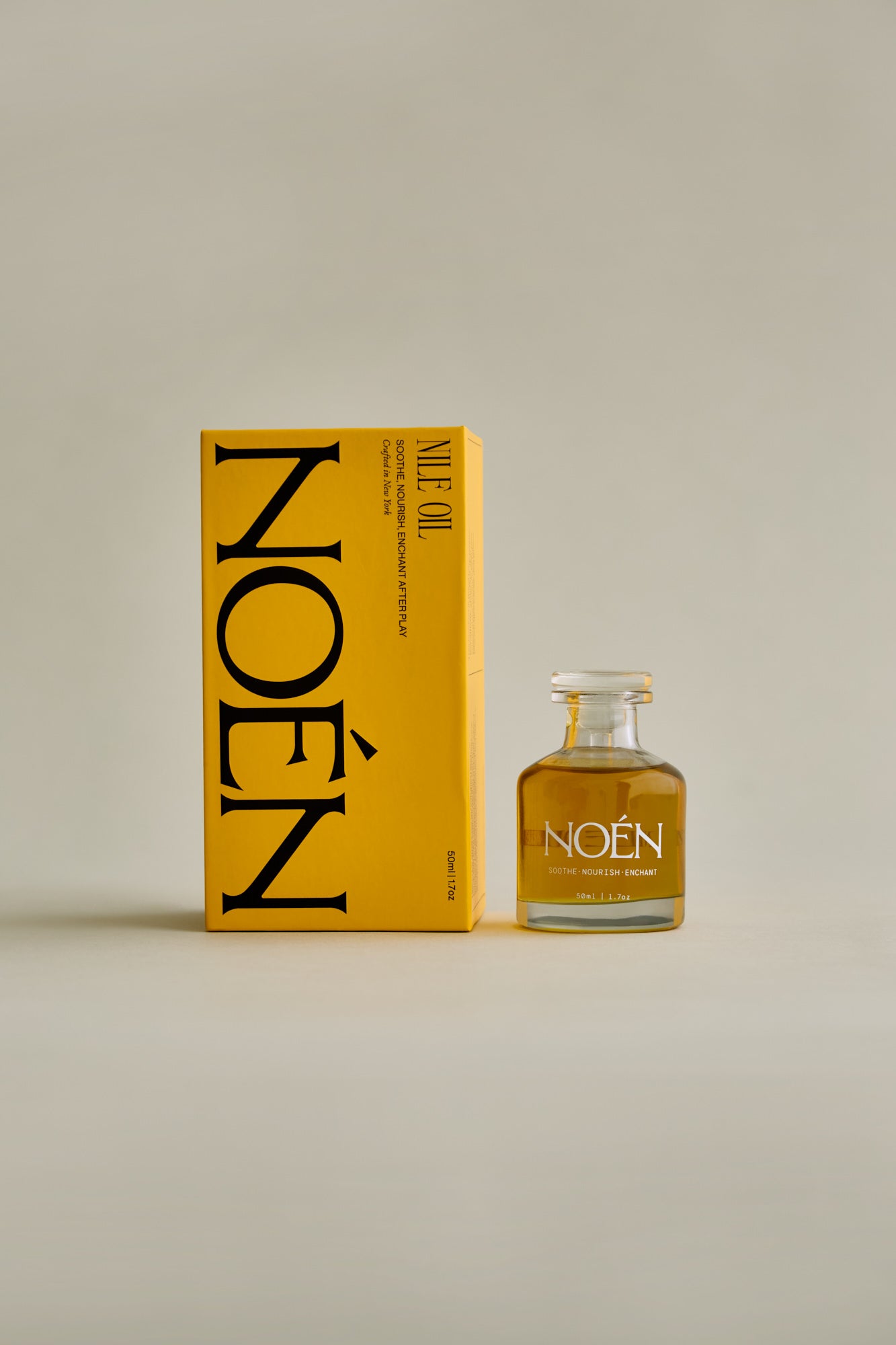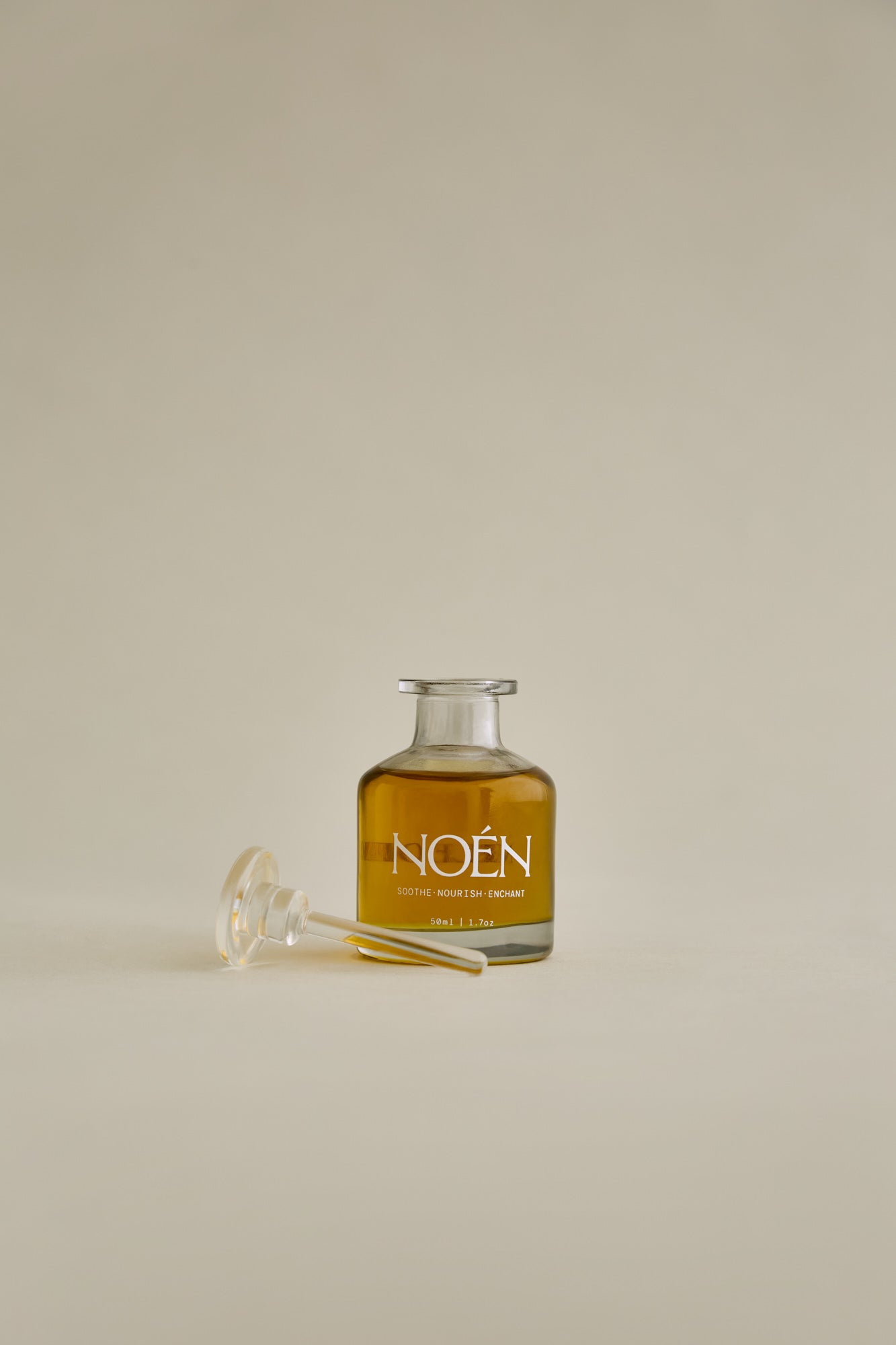Long before modern chemistry gave it a name, beta-caryophyllene was already working its way into ancient rituals of healing. Found abundantly in black pepper, clove, cinnamon, and cannabis, this aromatic compound has been part of human wellness practices for thousands of years—including in ancient Egypt, where spice oils containing high concentrations of beta-caryophyllene were used in both medicine and sacred anointing rituals.
Egyptian priests and physicians understood what we're only now proving in laboratories: certain plant compounds don't just sit on the surface of skin. They penetrate deeply, interact with the body's internal systems, and create measurable physiological changes.
Beta-caryophyllene was one of those compounds. Present in the black pepper and cinnamon oils used in Egyptian embalming and healing practices, it was valued for its warming, soothing properties—its ability to ease physical discomfort and create a sense of bodily ease.
What It Actually Is
Beta-caryophyllene is a terpene—a class of naturally occurring hydrocarbons found in the essential oils of many plants. Its molecular structure makes it unique among plant compounds: it's lipophilic, meaning it dissolves in fats and oils, allowing it to penetrate the skin's lipid barrier with remarkable efficiency.
But what makes beta-caryophyllene truly exceptional isn't just its ability to absorb—it's what it does once it gets inside.
The CB2 Connection: How It Works in the Body
To put it simply: beta-caryophyllene binds directly to the same receptors in your body that CBD targets—but it does so without any psychoactive effects. No high. No alteration of consciousness. Just pure physiological interaction with your endocannabinoid system.
What does this mean for your skin and body?
The CB2 receptors are primarily found in peripheral tissues—including skin, immune cells, and the nervous system outside the brain. When beta-caryophyllene binds to these receptors, it triggers several responses:
Anti-inflammatory action: It signals the body to reduce inflammatory cytokines, calming irritated, reactive skin.
Pain modulation: It interacts with pain signaling pathways, which is why cultures have used clove oil (high in beta-caryophyllene) for toothaches and muscle pain for centuries.
Stress response: By working on the endocannabinoid system, it helps regulate the body's stress response at a cellular level, creating a sense of physical ease.
This isn't subtle. This isn't aromatherapy placebo. This is a plant compound working on your nervous system in a measurable, replicable way.
Why It Matters in Skincare
Most skincare ingredients sit on the surface or penetrate the epidermis to hydrate, protect, or provide antioxidants. Beta-caryophyllene does something different: it works systemically.
When applied topically in an oil-based formula, beta-caryophyllene:
Calms sensitive, reactive skin: By reducing inflammation at the receptor level, it addresses the root cause of redness and irritation, not just the symptoms.
Soothes physical discomfort: Perfect for massage oils or post-workout application, it eases the kind of tension that sits deep in tissue.
Creates a sensory shift: Users often report a sense of physical "settling"—a grounding feeling that's hard to describe but immediately noticeable. That's the CB2 receptors responding.
Enhances the sensory experience of touch: Because it modulates how your nervous system processes sensation, it can make touch feel more present, more felt. This is why it's become essential in intimacy care formulations.
Where It's Found (And Why We Use It)
Beta-caryophyllene occurs naturally in:
- Black pepper (one of the highest concentrations)
- Clove
- Cinnamon
- Cannabis (both hemp and marijuana)
- Hops
- Oregano
- Basil
- Lavender
In The Nile Oil, we source our beta-caryophyllene from plants with documented histories of use in both pleasure and healing practices. The concentration is high enough to be effective, balanced carefully with other botanicals that work synergistically to soothe, soften, and awaken.
The Science Is Just Catching Up
For thousands of years, cultures around the world used spice oils rich in beta-caryophyllene without knowing why they worked. They just knew that they did—that rubbing clove oil on sore muscles brought relief, that black pepper oil warmed and soothed, that these compounds had a tangible effect on how the body felt.
Modern research is now validating what ancient practitioners understood intuitively. Studies show that beta-caryophyllene has significant anti-inflammatory properties, interacts directly with the endocannabinoid system, and offers therapeutic benefits for pain, stress, and skin conditions—all without the psychoactive effects of THC.
We're not inventing new wellness. We're remembering old wisdom and proving it with science.
Why It's in The Nile Oil
We didn't include beta-caryophyllene because it's trendy or because it sounds good on a label. We included it because when you're formulating an oil designed to make people feel present in their bodies—to heighten sensation, to ease tension, to make touch feel like something worth paying attention to—you need an ingredient that works at the nervous system level.
Beta-caryophyllene does that.
Combined with blue lotus (which awakens), calendula (which calms), and a base of nourishing oils that hydrate and protect, it creates a formula that doesn't just sit on your skin. It changes how your body feels your skin.
That's not marketing language. That's pharmacology.
And it's why this ancient compound belongs in modern intimacy care.








